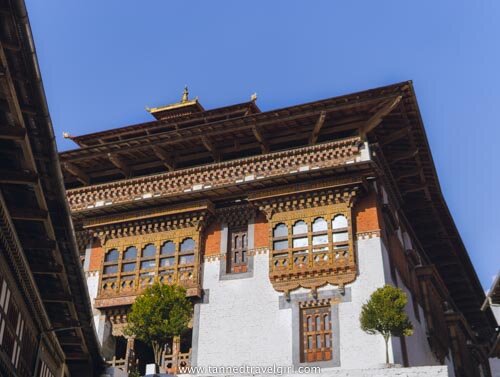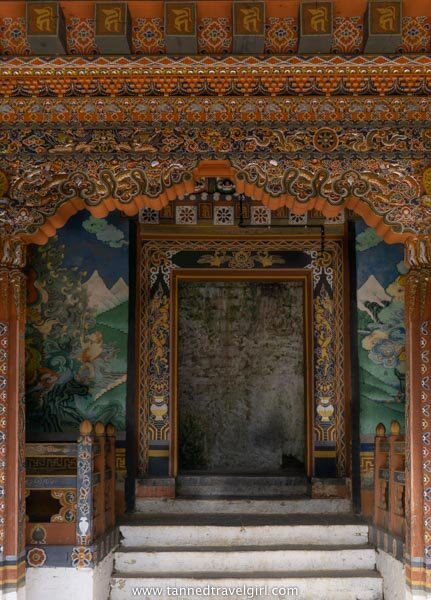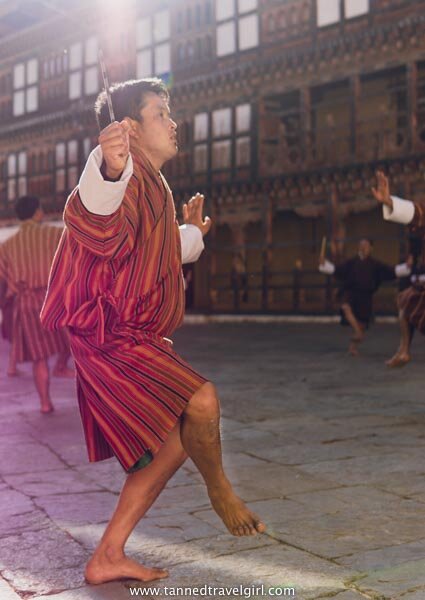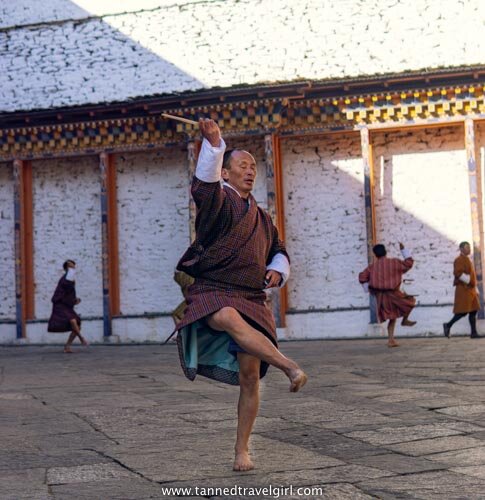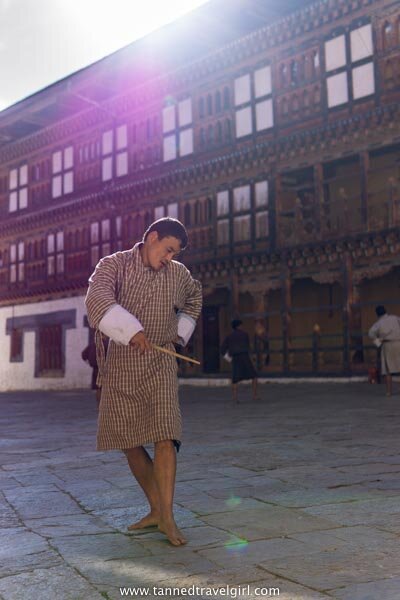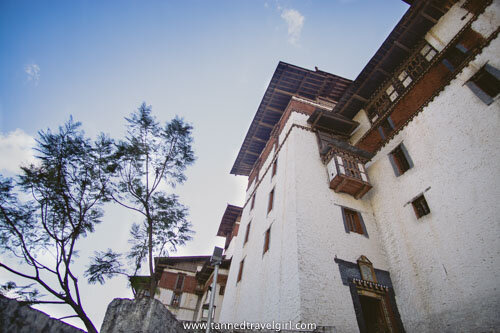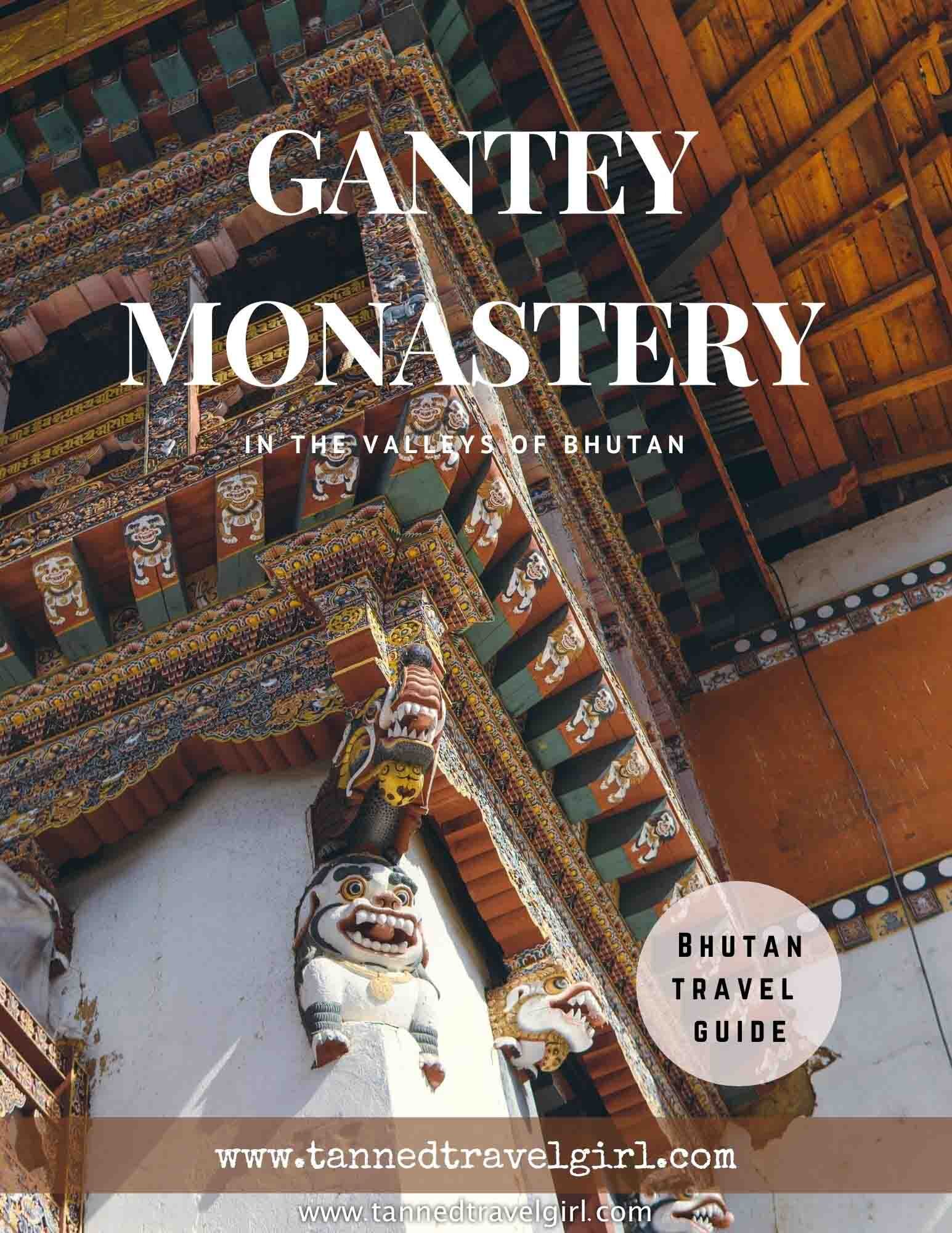Exploring Trongsa Dzong - History, Architecture, Festival and Photos
Dzongs are traditional fortresses, built across Bhutan during the 17th century as a defence against impending Tibetan attack and for gaining control over the region. There are, of course, many dzongs throughout Bhutan, but right on the top of a hill is this enormous fortress overlooked by this small quiet town of Trongsa. Trongsa Dzong is the longest dzong in Bhutan and strategically placed in the middle of Bhutan connecting the West with the East of Bhutan
Apart from being an architectural marvel, Trongsa Dzong is of historic and royal relevance because it is at the Trongsa Dzong the foundation for the unification of Bhutan was laid. Over the years, the roles of Dzongs have changed from being a strategic fortress built for gaining power and a centre of spreading Buddhism to modern Bhutan’s administrative offices, religious residences for Monks, as well as being homes to museums. Trongsa Dzong is also now one of the largest monasteries of Bhutan and a place where local festivals are being conducted.
On my Bhutan trip, while heading from Phobjikha Valley to Bumthang on a cold December morning, we crossed the beautiful Lawala pass and took a stopover of a few hours to explore the commanding Trongsa Dzong. The day was clear with the bright cold sun making it perfect timing for sightseeing the town of Trongsa.
If you are looking to explore Bhutan differently, add Trongsa Dzong to your itinerary. It is away from the touristy west giving you ample space and silence to soak and absorb the history of Bhutan. In this blog, I will tell you about the History of Trongsa Dzong, architectural aspects of Trongsa Dzong, the royal museum, Trongsa Ta Dzong and all the other relevant information you will need to plan a trip to Trongsa. Happy reading!
Quick Navigation for the Trongsa Dzong blog
History of Trongsa Dzong: Foundation for the Kingship
The architecture of Trongsa Dzong
Trongsa Tshechu, a famous festival in Trongsa dzong
Trongsa dzong opening hours
Trongsa dzong charges
Trongsa Ta dzong (The Royal Heritage Museum - official name)
Restaurants near Trongsa Dzong
Best time to visit Trongsa Dzong
How to reach Trongsa Dzong
Special Permit for visiting Trongsa
Tips for visiting Trongsa Dzong
History of Trongsa Dzong: Foundation for the Kingship
Trongsa Dzong’s History goes back ages when a temple and meditation room was built in 1543 by a great lama from Tibet, Ngagi Wangchuk, the late great grandfather of the unifier of Bhutan.
His great-grandson Ngawang Namgyal (the unifier of Bhutan) constructed the first dzong to replace the former structure and named it the Chökhor Rabtentse Dzong, also now called the Trongsa Dzong. He constructed Trongsa Dzong because of its strategic central location to control the trade and power between the east and west Bhutan.
In the yesteryears, the road connecting eastern and western Bhutan passed through the courtyard of the Trongsa dzong. At the command of the Penlop (Governor), the massive doors could be shut, dividing the country into two. This gave immense power to the Governor of Bhutan in terms of larger tax revenue from trade between the two parts.
Trongsa Dzong is also closely connected with the royal family of Bhutan. The Governors of Trongsa region were elected as Dragon Kings of Bhutan. Even today, the tradition is being continued. The prince of the royal family needs to serve as a governor of Trongsa, before being crowned as the King of Bhutan.
The architecture of Trongsa Dzong
Trongsa Dzong is a majestic fortress with its height increasing every step that you take. Scrambling to take a good shot with my camera, I saw the Dzong rising from the ground, high above the river Mande flowing next to it. The sky touching entrance and the stone staircases beneath will make you wonder the mysteries of inside. The walls are made of white-painted bricks and stones with few or no windows in the lower sections, and the red stripe on the top which is sometimes punctuated by large gold circles. The upper section, windows and doors are made with Timber wood which is carved in an intricate design.
Trongsa Dzong consists of a maze of courtyards, passageways and corridors and the complex contains as many as 25 temples. The architecture of the Trongsa Dzong makes it one of the most spectacular sited Dzong of Bhutan.
Currently, the chambers in Trongsa Dzong are used as a monastery and Trongsa Dzong has over 200 monks and the Dzong has become an administrative office for Trongsa.
There are two gates to the Trongsa Dzong, the main East Gate (which is taken by most of the tourists) and the west Gate (which involves a hike of around 2 hours from the view point restaurant called Mangdue Foot Trail).
Trongsa Tshechu, a famous festival in Trongsa dzong
Trongsa Tshechu is a 5 day annual festival that is celebrated in the courtyard of Trongsa Dzong in December. Trongsa Tshechu is celebrated to commemorate the Guru Rinpoche's Birth who is known as the Second Buddha across the nation for his contribution in spreading Buddhism teachings in Bhutan.
During the Trongsa Tshechu, there is a colourful showcase of life and culture, whereby various mask dances and traditional performances are done by monks. The dance is called the Cham dance. The whole performance/ritual also has a musical tone to it, the lead of the group plays an instrument called ‘cymbal’ to track time. These festivals happen everywhere in Bhutan and are region-specific. Locals across the region come with the family to enjoy the festivities.
Visiting Trongsa during the Tshechu festival will give you a good taste of what local life in Bhutan looks like on special days.
Trongsa dzong opening hours
The opening hours for Trongsa Dzong is from morning 6 AM till 5:00 PM in the evening. For the winter months (November to February), Trongsa Dzong is open till 4:00 Pm in the evening.
Trongsa dzong charges
If you are not from India, Bangladesh and Maldives, all the entry charges etc are covered in your daily tourism fees of USD 250.
Even for tourists from India, Bangladesh and Maldives, there are no entry charges/ fees for Trongsa Dzong unlike Paro Dzong, Thimphu Dzong and Punakha Dzong which caught me by surprise. Maybe because not many such tourists come to the central and eastern side of Bhutan.
Trongsa Ta dzong (The Royal Heritage Museum - official name)
Just a few meters away and uphill is a watchtower for Trongsa Dzong, named as Ta Dzong. Ta Dzong is a majestic five-storey cylindrical tower with four observation points resembling Tiger, Lion, Garuda, and Dragon.
Ta Dzong once protected the Trongsa Dzong from internal rebellion and any foreign attacks. Now, it has been converted into a national museum with financial support from Austria. The Ta Dzong museum is a state of the art museum and houses original paintings, artefacts from throughout the history of Bhutan. You will also get a tour of different buddhas and the explanation for many of the aspects of Bhutanese lives and the evolution of their culture. The tour includes a video clip on the history of Bhutan’s unification and the story of Trongsa Dzong.
Trongsa Ta Dzong - Timings and Charges
Trongsa Ta Dzong is open from 9:00 AM till 5:00 PM on all days. During winters (November to February), Ta Dzong closes by 4:00 PM.
Ta Dzong Entry Charges - If you are a citizen of any non-SAARC country, the entry charges would be 200 Bhutanese Ngultrum (Nu) (roughly USD 3). If you are from a SAARC country (India, Sri Lanka, Bangladesh, Maldives, Nepal, Pakistan, Afghanistan), the entry charges are 100 Bhutanese Ngultrum (Nu) (roughly USD 2).
Restaurants near Trongsa Dzong
The lane outside Trongsa Dzong is the main Trongsa market (much smaller when compared to Paro, Thimphu etc). You will find many local eateries on the lane. Mentioning a few I had heard about-
Oyster House - Oyster House is in the main market, meters away from the Dzong. Known for Tibetian and Bhutanese cuisines
Tashi Injey Hotel, Norling Restaurant
ViewPoint Restaurant - View Point restaurant is a few km before Trongsa on a mountain turn from where you can get a panoramic view of the entire Trongsa Dzong. Can be a good stopover for some hot coffee and the mountain view.
Best time to visit Trongsa
Best time to visit Trongsa Dzong will be during the 3 day Trongsa Tshechu festival to experience the local festivities. The Festival happens as per the local calendar (sometime in late December or early January).
Bhutan, especially the central and east Bhutan, can be extremely cold in these months. From a climate and weather point of view, March to May (Spring Season) and September till November (Autumn season) are the best months to visit Bhutan overall.
How to reach Trongsa Dzong
As I told you before, Trongsa is the geographic centre of Bhutan and connects the much explored west Bhutan with East Bhutan.
Thimphu to Trongsa
Trongsa Dzong is around 200 km from the capital city Thimphu. The only way to reach Trongsa will be via road.
The best way to reach Trongsa will be by hiring a private cab from a timing and comfort point of view. It will take around 5 to 6 hours from Thimphu to Trongsa in a private taxi.
If you are on your own and on a budget, you can also find private buses running between Thimphu to Bumthang and Trongsa will be a stop on the route. There are a very limited number of buses running between the two stops with 20 seater capacity. Book your bus at least one day in advance (which can be purchased from the bus stop itself) to avoid the last-minute hassle.
Special Permit for visiting Trongsa
Passport holders from India, Bangladesh and Maldives will need a special permit to visit beyond Thimphu and Paro. Visiting Trongsa Dzong will require a special permit which can be made from Thimphu.
If you are coming from other countries, you do not need a special permit. All the requirements will be taken care of by your tour operators. Just ask them to add Trongsa in your itinerary.
Tips for visiting Trongsa Dzong
Trongsa Dzong is also a home for monks. Respect their personal space and ask before taking their pictures, some of them don’t like it and some are extremely friendly.
You don’t need to take off shoes at the dzong except for the temples. Also, photography is not allowed inside these temples.
The Ta Dzong is closed on government and local holidays.
Photography is not allowed in Ta Dzong. You will need to submit your camera and mobiles at the entrance of the Ta Dzong.
I would also recommend you to add Chimi Lhakhang (the Fertility Temple of Bhutan where male phallus are painted on the wall) to your Bhutan travel itinerary. Read my blogs on Bhutan down below.
I hope you found this blog on Trongsa Dzong helpful in planning your Bhutan trip. Do consider adding this largest and not much explored Dzong of Bhutan to your Itinerary. If you have any more questions, drop them in the comments and I will revert soon.
If you are exploring Bhutan, do check out my other Bhutan travel blogs here. I have covered some of the lesser-explored monasteries, towns and unseen sides of Bhutan to help you plan a perfect non-conventional itinerary for your Bhutan trip.
Love,
Tanned Travel Girl




